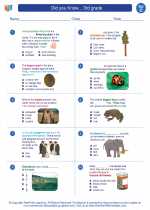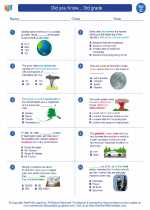Mountains
A mountain is a large landform that rises prominently above its surroundings, typically with steep slopes and a peak. Mountains are formed through a variety of geological processes, including tectonic plate movements, volcanic activity, and erosion.
Formation of Mountains
Mountains can be formed through several processes:
- Tectonic Plate Movements: When tectonic plates collide or move apart, it can result in the formation of mountains. For example, the Himalayas were formed by the collision of the Indian and Eurasian tectonic plates.
- Volcanic Activity: Some mountains, such as Mount Fuji in Japan, are formed through volcanic eruptions, where molten rock, ash, and gases are ejected from the Earth's crust, building up layers of solidified lava and volcanic debris.
- Erosion: Erosion by water, wind, and ice can also shape mountains over millions of years, creating unique formations like the Grand Canyon in the United States.
Types of Mountains
There are several types of mountains, including:
- Fold Mountains: These are formed by the folding of rock layers due to tectonic plate movements. The Appalachian Mountains in the United States are an example of fold mountains.
- Volcanic Mountains: These mountains are formed from the accumulation of volcanic materials. Examples include Mount St. Helens in the United States and Mount Kilimanjaro in Africa.
- Block Mountains: Block mountains are created when large areas of the Earth's crust are uplifted and tilted. The Sierra Nevada in the United States is an example of a block mountain.
Mountain Habitats
Mountains are home to a diverse range of plant and animal species adapted to the unique environmental conditions, such as low temperatures, high altitudes, and rocky terrain. Some iconic mountain-dwelling animals include the snow leopard, mountain goats, and alpine marmots.
Human Interaction with Mountains
Mountains have been important to human cultures for thousands of years, providing valuable resources such as water, minerals, and timber. They also offer recreational opportunities such as hiking, skiing, and mountaineering.
Study Guide
Here are some key points to remember when studying mountains:
- Understand the geological processes that lead to the formation of mountains, including tectonic plate movements, volcanic activity, and erosion.
- Recognize the different types of mountains, such as fold mountains, volcanic mountains, and block mountains, and be able to provide examples of each type.
- Explore the unique habitats found in mountain environments and the adaptations of plants and animals to these conditions.
- Consider the significance of mountains to human societies and the various ways in which people interact with and depend on mountain ecosystems.
By understanding the formation, characteristics, and significance of mountains, you can gain a deeper appreciation for these awe-inspiring natural features.
[Mountain] Related Worksheets and Study Guides:
.◂Science Worksheets and Study Guides Third Grade. Did you Know... 3rd grade

 Worksheet/Answer key
Worksheet/Answer key
 Worksheet/Answer key
Worksheet/Answer key
 Worksheet/Answer key
Worksheet/Answer key
